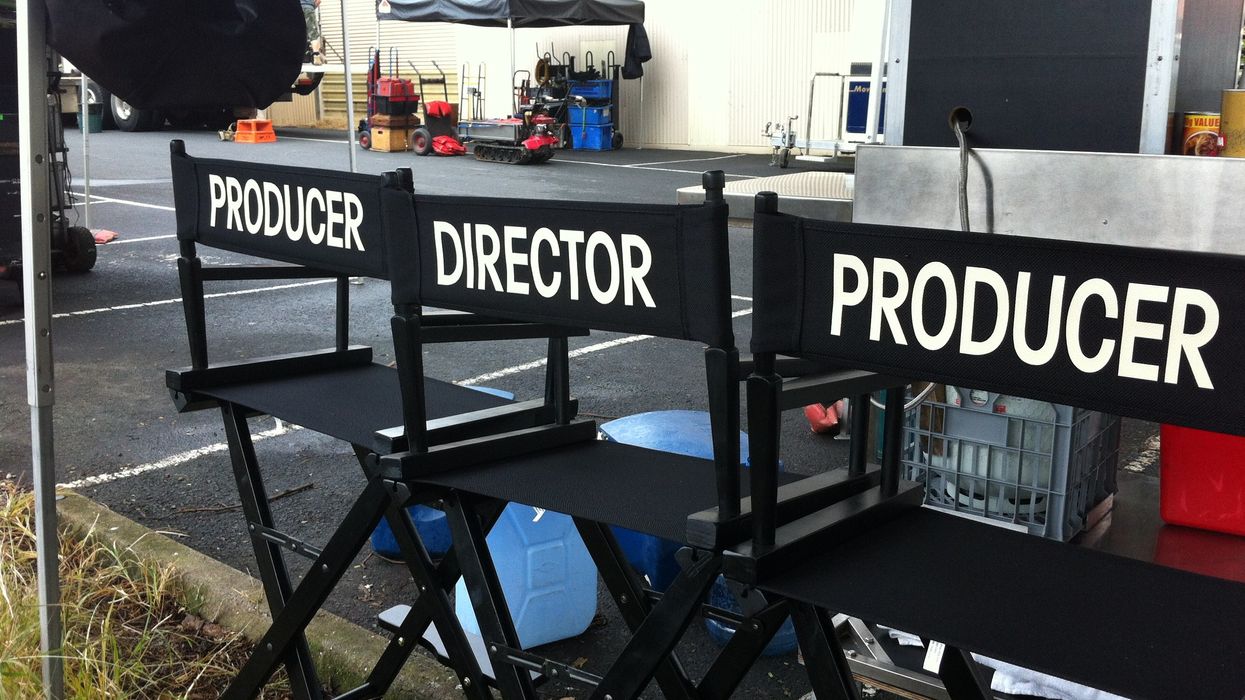To Short or Not To Short: 3 Things to Think About Before You Make a Short Film
The first film I ever exposed was one roll of black and white Tri-X Kodak stock. I was 17, the film was about a dude who wakes up after a nightmare (or is he still in the nightmare?!) and gets chased by -- himself! Except, you know, with his nose piercing in and underlit to make him super scary.

This was shot MOS (silent), as were my other two films that summer, and I think I must have been the last of the last kids to shoot anything on film stock. I even learned to edit on a flatbed Steenbeck, the type of workhorse that now decorates the lobbies of so many production companies (something I find kind of depressing, but let it never be said that I'm not a sentimental dude.)
But regardless of format, most directors choose to get their feet wet with a short film, since jumping into a feature is, well, kind of daunting. This video, from Santa Fe University, breaks down the steps of short film production in a great and easy to understand way, perfect for any novice filmmakers, or any director for whom a produced short film is a New Year's Resolution for 2016.
And this article, by Richard Raskin, is also required reading for short filmmakers and features some excellent takeaways for anyone thinking of helming a >30 minute movie:
A Short Is Like A Joke
Unsurprisingly, when it comes to short films, brevity is definitely the soul of wit. Just like a great short story should be absorbed in one quick sitting, like a gut punch, an amazing short film really only has time to focus on one thing, and to do that thing well. It's practically like a joke, no matter how serious the subject matter might be. For instance, Eating Out, by Norwegian director Pål Sletaune, accomplishes its task in just 6 minutes and does so with economy and aplomb, as well as grace. And when I say grace, I mean there is no wasted action; everything is necessary, everything is of a piece. It's such a good short, I don't want to spoil it, so spend six minutes of your life watching a real exemplary piece of filmmaking.
Freedom of Choice
This goes for any sort of dramatic writing, but is especially important in the short film, and is often neglected by tyro filmmakers (it was definitely a mistake of mine); I became so enamored with the whiz bang of getting to shoot a movie that I totally forgot to have the most important thing, a story. And not just any story, but a story that moved people, and that was, crucially, the result of a character's choice, a choice that set in motion a causal chain. Raskin here quotes Aristotle:
Whenever such-and-such a personage says or does such-and-such a thing, it shall be the probable or necessary outcome of his character, and whenever this incident follows on that, it shall be either the necessary or the probable consequence of it.
In other words, no B without A. Things don't just happen, and two unrelated events do not cause each other. (Although, it's your film, and film is art, so feel free to do whatever you want!) I'm only talking here about a specific kind of narrative short, not, you know, Un Chien Andalou.
The Sound or the Fury
According to the redoubtable Robert Bresson,
If a sound is the necessary complement of an image, give preponderance either to the sound or to the image. As equals, they interfere with one another or kill each other off [clash], as is said of colors. Sound and image must not come to one another's assistance but rather take turns, working in shifts.
Again, this is sound advice for any length of genre of filmmaking, and has to do with general aesthetic theory, namely that all the elements of a film should be in harmony. The point Raskin and others are making is that, when it comes to a short film, everything you do is magnified, so paying attention to the fundamentals is extra important. In a short, you just don't have the time to meander that you do in a feature, and hence, everything has to be tighter, because the audience only has a few minutes to connect with your story, and you better make sure they do!
And now, please allow me to close with a film that breaks all of these rules, Buñuel and Dalí's surrealist masterpiece, a fifteen minute silent short that breaks all the rules, while making some, too. It just goes to show, no one really knows what's going to work, and you'll never know if you don't try.
This has been a friendly message from your friendly friends at No Film School.
Source: Five Parameters for Story Design in the Short Fiction Film














